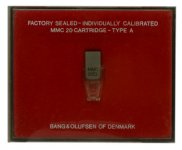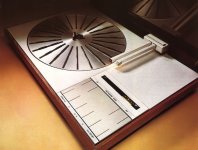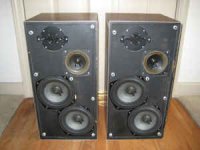Thanks Salas and AndrewT for your advice and suggestions.
I have redrawn my pcb layout as per Salas advice and would like you to have a look to make sure I understood correctly. I have a couple cylindrical MKPs which I'll mount vertically.
When I made a similar HV Regulator (again by Salas - thanks!) I didn't have much luck. But then, luckily a DIYA board was made available. I don't wish to go the same route!
Thanks in advance and all the best for the festive season to all DIYA members
Looks alright I guess.
There are links in post #1. Bottom link is newest version. There is pdf guide in all versions.
OK. Is there any place where to get a pcb or a complete kit?
Ask member Tea-Bag. He had completed a small GB round lately, maybe he has got some extra still.
OK. Is there any place where to get a pcb or a complete kit?
I have a completed build of the phono stage made from the official Tea Bag PCB's I am selling if you have any interest.
It's a two box build with the raw DC supply in an aluminium box and the phono stage in a matching box with an umbilical cable.
This is the high gain version for MC cartridges only. Top quality components throughout.
Let me know if you are interested and I will mail you some pictures.
Missing 70dB+ MC gain in your system?
Sorry, I'm not sure I understand the question. 🙂
Hi,
I need it to be for MM, not MC.
I have already e-mailed Tea-Bag and I'm waiting for an answer.
I need it to be for MM, not MC.
I have already e-mailed Tea-Bag and I'm waiting for an answer.
Hi,
I need it to be for MM, not MC.
I have already e-mailed Tea-Bag and I'm waiting for an answer.
It's easy to modify for MM.
Hi,
I need it to be for MM, not MC.
I have already e-mailed Tea-Bag and I'm waiting for an answer.
Tea-Bag replied PM with positive information!!
Sorry, I'm not sure I understand the question. 🙂
I think you needed even more MC gain in your system to sound loud enough and 63dB wasn't sufficient for you I meant.
I think you needed even more MC gain in your system to sound loud enough and 63dB wasn't sufficient for you I meant.
Yes, sorry, I see what you mean. I use a DC Pass B1 as a preamp, a version of your very own design without the output switching relays. There is not quite enough gain and it lacks a bit of dynamics with the B1 buffer.
Now why do you people call this project "Simplistic"? It is very very far from being so.
Simplistic is something like Figure 1 here:
http://www.ti.com/lit/ds/symlink/lme49720.pdf
Has anyone built that and compared it in audio quality with the NJFET design?
Tea-Bag has kindly sent me all the information I need. It would be much more expensive than what I was planning to.
Simplistic is something like Figure 1 here:
http://www.ti.com/lit/ds/symlink/lme49720.pdf
Has anyone built that and compared it in audio quality with the NJFET design?
Tea-Bag has kindly sent me all the information I need. It would be much more expensive than what I was planning to.
Because you got few semiconductor junctions only along the signal path in this and who knows how many in that other example. Hence "simplistic". Although the parts seem less, there are many more inside the chips.
Yes, sorry, I see what you mean. I use a DC Pass B1 as a preamp, a version of your very own design without the output switching relays. There is not quite enough gain and it lacks a bit of dynamics with the B1 buffer.
You would need a 33dB power amp and 92dB+ loudspeakers for good swings. Or 10-12dB line preamp.
I have two original models.You got one already?
Attachments
Because you got few semiconductor junctions only along the signal path in this and who knows how many in that other example. Hence "simplistic". Although the parts seem less, there are many more inside the chips.
Oh, I'm very much aware of what's inside a chip, and sometimes less is not more too.
My latest Salas Folded boards are up and running..... The cool work done in the riaa filter produced it's benefic results.... I am glad that this time the build worked perfectly from the start without any need for fine tunning.... just followed my calc and used carefully measured parts.
What a blast.
What a blast.
You asked why the naming, so that was the reasoning answer. If you want something simpler in the to put together sense, then go chips and global NFB. This one is more like building a tubes phono sans the heaters.Oh, I'm very much aware of what's inside a chip, and sometimes less is not more too.
My latest Salas Folded boards are up and running..... The cool work done in the riaa filter produced it's benefic results.... I am glad that this time the build worked perfectly from the start without any need for fine tunning.... just followed my calc and used carefully measured parts.
What a blast.

You asked why the naming, so that was the reasoning answer. If you want something simpler in the to put together sense, then go chips and global NFB. This one is more like building a tubes phono sans the heaters.
Yes, it's probably so. And I'm not such a fan of tubes.
It was adviced to me to use a cascode at the input, but at the same time I was told to be careful about paralleling the input jfets, as that might be useful with MC carts, and not MMs. Is that so? What would you advise?
My plan is to use battery supply, so what should be the minimum I should use?
Where can I find the official pcb design?
Last edited:
- Home
- Source & Line
- Analogue Source
- Simplistic NJFET RIAA


